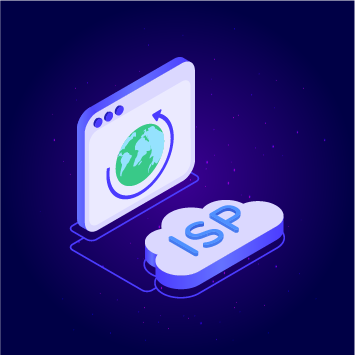The world of IP addresses—a magical realm where numbers rule and packets roam free. But wait, what's this? Native IP and Broadcast IP? Are they siblings, rivals, or just two nerdy kids sitting at opposite ends of the digital lunch table? Let’s break it down in a way that even your grandma could appreciate (if she’s into networking). Native IP: The Homebody Think of a native IP as your cozy home address. It’s the one that says, “Hey, this is where I live. Send my mail (or data packets) here.” Native IPs are like introverts—they’re all about one-on-one connections. You send a message to a specific device, and boom, it goes directly there without any drama. Simple, efficient, and no unnecessary small talk. In tech terms, a native IP is assigned to a single device on a network. It’s unique, like your fingerprint—unless you’re a twin, but let’s not complicate things. This is how your laptop, smartphone, or smart fridge gets its own identity in the digital world. Yes, even your fridge has an IP these days. Welcome to 2023. Broadcast IP: The Party Animal Now, let’s meet the broadcast IP. If the native IP is the homebody, the broadcast IP is the life of the party—the one who yells, “Hey everyone! Listen up!” A broadcast IP doesn’t send data to just one device; it sends it to *all* devices on the network. It’s like throwing confetti in a room and hoping everyone catches a piece. Imagine you’re in a group chat (ugh, I know), and you want to tell everyone about your cat’s new trick. Instead of messaging each person individually (native IP style), you just blast it out to the whole group (broadcast IP style). Sure, not everyone cares about your cat doing backflips, but hey, they’re in the group chat for a reason. Technically speaking, the broadcast IP is the highest address in an IP range. It’s reserved for sending messages to all devices in a local network. Think of it as the network’s megaphone—except it doesn’t get tired or lose its voice. The Verdict So, which is better? Well, it depends on what you’re trying to do. Need to deliver a private message? Go native. Want to announce free pizza in the office? Broadcast away! Just remember, with great power comes great responsibility. Overusing broadcast IPs can clog up your network faster than your arteries after a deep-fried butter binge. In conclusion, native IPs and broadcast IPs are like peanut butter and jelly—they serve different purposes but work together to make the internet deliciously functional. So next time you’re configuring your network, give these two a little nod of appreciation. After all, they’re the unsung heroes of your online life. And yes, even your fridge thanks them.
2025-01-18





